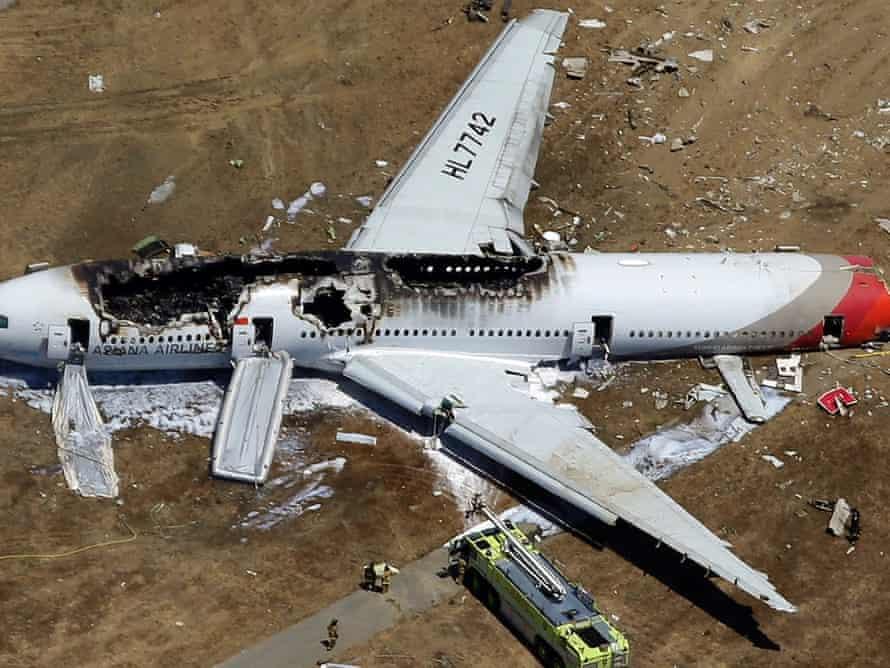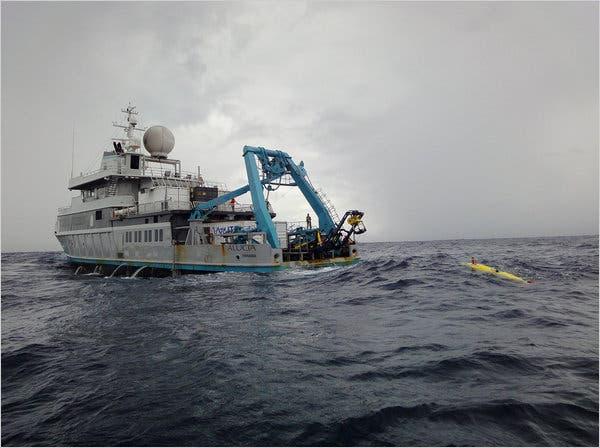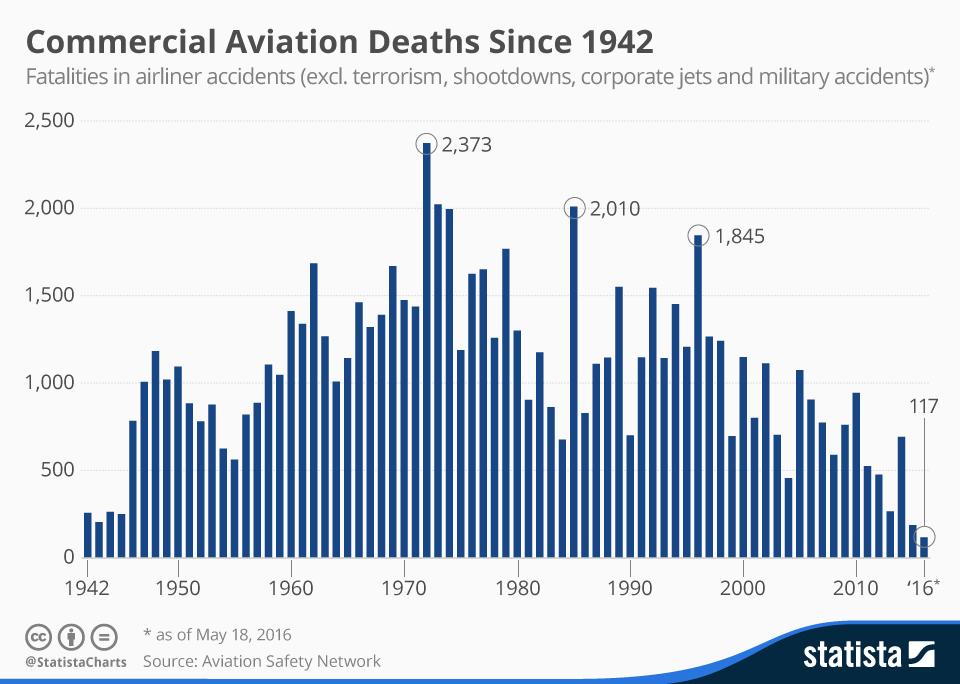Executive Summary
This report analyzed and assessed two aviation incidents case studies (The crash of Asiana Airlines flight 214 and the Air France 447 disaster) using human factors. Moreover, human factor models (The Swiss cheese and Dirty Dozen) were utilized in the analysis of the two air accidents to determine their potential causes. The aim of the report was to understand the significance of human factors in aviation incidents and use that knowledge to develop a preventive framework.
The report’s findings indicated that human factors played a substantial role in Asiana Airlines and Air France 447 disasters as they were caused by the flight crews’ lack of good communication, inadequate technical knowledge, and lack of teamwork. It was recommended that Airline firms should adopt a comprehensive Crew Resource Management (CRM) system as it incorporates a set of strategies and behaviors that pilots possess and have to follow for the sake of aviation safety.
Introduction
The purpose of this report is to study human factors in the context of airline and aviation organizations. Human factors are defined as issues that influence how workers perform their duties. They include personal and social skills, such as decision-making and communication, which complement people’s technical capabilities (Civil Aviation Authority [CAA], 2017). Human factors deal with unintentional and hidden human mistakes, which may lead to immediate damage or threaten the aircraft’s technical airworthiness. Failures and errors can cause disastrous accidents, waste resources, and damage reputations (Salas and Jentsch, 2016).
This report analyses and assesses two aviation incidents case studies using human factors. It utilizes the Swiss cheese and Dirty Dozen models in the analysis of the accidents. It also discusses methodologies used by airline and aviation organizations to apply human factors in their operations for safety purposes. Moreover, it compares and comments on the similarities of the two occurrences using the “loss of control” view, the two human factor models, and the limits perspective. Furthermore, it outlines lessons learned and gives recommendations through the Crew Resource Management (CRM) approach for the prevention of future mistakes in the aviation sector.
Analysis and Findings
Analysis and Assessment of the Crash of Asiana Airlines Flight 214 Using Human Factors
Asiana Airlines flight 2014 crashed into the San Francisco Bay on July 6, 2013. On this date, the plane departed from South Korea with 16 crew members and 291 passengers aboard (Small, 2020). It was bound for San Francisco International Airport but failed to reach its destination after crashing short of the landing field, with the tail and landing gear striking the seawall that projects into the Bay (fig. 1). Out of all individuals who were in the flight, 241 sustained minor and critical injuries, 2 lost their lives at the scene, and 1 succumbed five days later while receiving treatment at the San Francisco General Hospital and Trauma Center (SFGH) (Campion et al., 2016, p. 513).
In the United States, aviation crashes account for more than 400 deaths across the country’s transportation sector (Campion et al., 2016, p. 513). Such statistics point to the significance of studying human factors in airline operations.
James Reason’s Swiss cheese model can be used to assess the possible causes of the Asiana Crash. Reason hypothesized that most incidents originate from at least one of four failure levels: controls (unsafe supervision), organization (organizational influences), people (hazardous acts), and work processes (preconditions for perilous acts) (Gerstle, 2018). This hypothesis corresponds to investigations into Asiana’s incident, which found considerable errors that revolved around human factors. The National Transportation Safety Board (NTSB) of the United States reported that the flight crew lacked adequate knowledge of the plane’s automated systems (Small, 2020).
The safety board attributed the accident’s cause to the crew’s negligence in maintaining and monitoring the aircraft’s speed and canceling landing in a dangerous situation (Small, 2020). Apart from failing to abort landing in an unsafe condition, the plane’s crew was accused of the failure to challenge a captain’s action (Campion et al., 2016). These investigatory findings point to the fact that the Asiana crash was caused by the Swiss cheese model’s two levels of failure; unsafe supervision and people.

Analysis and Assessment of the Crash of Air France 447 (AF447) Using Human Factors
On June 1, 2009, AF447 crashed into the Atlantic on a night flight from Rio to Paris. It was reported that the plane encountered a tropical storm while crossing the Intertropical Convergence Zone, which is widely known for unfavorable weather conditions (fig. 2). Consequently, the aircraft’s speed control system suddenly became inoperable due to icing on its pilot tubes, leading to the disconnection of the autopilot and subsequent manual control mode.
The flight crew could not detect the aircraft’s problem as it rapidly descended and could not recover, crashing into the sea and killing all 228 passengers and crew members (Oliver, Calvard and Potočnik, 2017, p. 734). The duration of descent from the autopilot’s disconnection lasted 4 minutes and 23 seconds (Oliver, Calvard and Potočnik, 2017, p. 734). During this time, it has been established that neither of the three-member crew recognized that the plane was stalling. Instead, they were striving to understand what had occurred, leaving no time for taking appropriate corrective action.
The Dirty Dozen model can be utilized in the analysis of what might have led to the AF447 crash. Characteristically, Dirty Dozen attributes human errors to 12 common potential causes: pressure, distraction, lack of teamwork, complacency, poor communication, exhaustion, norm, stress, insufficient knowledge, inadequate resources, inattention, and lack of authority (Ahasan, 2018). Probes into the AF447 disaster indicate that the aircraft’s crew failed to perform relevant professional duties during the free fall (O’Brien, 2019, p. 32).
For instance, the procedure for unpredictable airspeed provides that pilots should switch off the flight directors to eliminate erroneous guidance, but the plane’s crew failed to follow such an important guideline (O’Brien, 2019, p. 41). Furthermore, concerns were raised over the interaction between pilots and aircraft automation. It has been established that AF447’s crew lacked the required understanding of the automation system, leading to their collective inability to make a timely diagnosis (O’Brien, 2019). Thus, from the perspective of the Dirty Dozen model, the incident can be attributed to poor communication, insufficient knowledge, and lack of teamwork.

Methodologies Used by Airline and Aviation Organizations to Apply Human Factors in Their Operations
Human factors entail gathering relevant information about human limitations, capabilities and other characteristics as well as applying the knowledge gained to ensure aviation safety. Typically, human factors are applied to machines, tasks, systems, environments and tools to produce safe and comfortable working procedures (Muñoz-Marrón, 2018). Similarly, the Dirty Dozen model acknowledges that Aircraft is made up of a series of complicated systems, placing emphasis on the essentiality of studying human factors to alleviate errors that may lead to fatalities in the aviation industry (Ahasan, 2018). Thus, airline and aviation organizations use human factors to better comprehend how individuals can most effectively and safely interact with technology (Muñoz-Marrón, 2018). This understanding is, in turn, translated into training, design and policies to improve human performance.
Various methodologies used by aviation and airline firms to apply human factors in their operations include but are not limited to employing human factors specialists and safety experts, training cabin crews and designing airplane-human interfaces (Muñoz-Marrón, 2018). The application of human factors in aviation is essential in enhancing the flight crews’ effectiveness.
Comparisons and Comments on Similarities of the Two Case Studies
Both Asiana Airlines and AF447 crashes can be termed as “loss of control” incidents. Currently, loss of control is recognized as the single leading cause of fatalities in commercial aviation (Oliver, Calvard and Potočnik, 2017, p. 730). According to Boeing, it accounted for about 1400 deaths in 15 catastrophic air accidents from 2006-to 2015 (Oliver, Calvard and Potočnik, 2017, p. 730). The International Air Transport Association (IATA) reports that although the number of air disasters has significantly reduced over time, incidents of loss of control are still prevalent in aviation sectors (fig. 3).
Ironically, this issue has been linked to preventive measures such as aircraft automation systems, which have also played a significant role in reducing the number of air crashes (Oliver, Calvard and Potočnik, 2017, p. 731). In the two case studies, it has been apparent that the accidents emanated from the complicated cockpit automation followed by the inability of the flight crews to interact successfully with such systems.
Still on similarities, Asiana Airlines and AF447 incidents are more attributable to human factors according to the Swiss cheese and Dirty Dozen models. For instance, the Swiss cheese model connects Asiana’s crash to people’s hazardous acts and unsafe supervision. On the other hand, Dirty Dozen links the AF447 accident to lack of knowledge, poor communication, and lack of coordination among the crew.
In both cases, these human factor models suggest that the crashes were mainly caused by human errors. According to the Swiss cheese model, cheese layers represent people’s guards, and the holes in the cheese are their mistakes (Gerstle, 2018). As a result, when these holes align, they create an avenue through which threats can pass through and cause an accident. Similarly, Dirty Dozen proposes that Aircraft is characterized by a complex system and human mistakes are bound to occur, especially when its operators have insufficient knowledge (Ahasan, 2018). Thus, both models indicate that human factors contributed to the two incidents.
The similarities between Asiana Airlines and AF477 disasters can also be explained through the limits perspective. According to this view, aircraft automation systems affect both endogenous and exogenous limits encountered by pilots (Oliver, Calvard and Potočnik, 2017).
First, automation acts as an intervention to prevent perilous maneuvers, acting as an exogenous, protective limit that insulates crew members from their actions’ consequences (Kuipers, Verolme and Muller, 2020). However, this interference restricts the experience and behavior repertoires of pilots. Second, while automation reduces the risk of cognitive overload-related faults among pilots, it erodes their professional capabilities under unusual conditions by giving inappropriate or ambiguous signals (Kuipers, Verolme and Muller, 2020). Based on investigation reports regarding the two case studies, respective pilots have been accused of the inability to handle unusual circumstances due to their over-reliance on automated systems.

Lessons Learned
Asiana Airlines and AF477 crash present considerable lessons that can help develop preventive measures to ensure aviation safety. Through human factor models, these two aviation case studies help understand various causes of human errors: lack of good communication, inadequate knowledge, and lack of teamwork (Eltorai, 2018). Based on Hofstede’s second dimension of the cultural framework (Individualism and Collectivism), people’s success is measured by how others in their groups support and view them (Demmler, Ortiz Ayala and Urbiola Solís, 2018). High individualism leads to low collectivism because individuals follow their self-interests, ignoring the importance of teamwork.
For instance, the Asiana Airlines crew failed to detect speeding problems in one of the plane’s key controls due to what appears a lack of coordination. Similarly, the crash of AF447 has been connected to an erroneous decision by one of its crew members, resulting in an aerodynamic stall. Such a mistake would have most likely been avoided if there were effective communication and coordination among the pilots.
Recommendations
The analysis and assessment of the two aviation events using human factors call for the need to fully implement crew resource management (CRM) in the aviation industry. Characteristically, CRM incorporates a set of strategies and behaviors that pilots possess and have to follow, for the sake of safety. Moreover, it recognizes the significance of human factors study in the enhancement of flight safety and air operations (Muñoz-Marrón, 2018). Applied in both military and commercial aviation, CRM has become a global training program and preparation in evidence-based management skills and abilities, designed to enhance decision-making, adaptation, and communication among crew members in demanding situations (Virovac, Domitrović, and Bazijanac, 2017).
Importantly, it acts as a tool to prevent accidents in which lack of coordination in the cockpit could be a contributing factor, as has been evident in the Asiana Airlines and AF477 air catastrophes.
This report recommends a comprehensive CRM system that is characterized by four key principles. First, commercial airlines should use a practical and active methodology for flight crews, based on mutual learning and participation, including work skills, team management, and leadership techniques (Virovac, Domitrović, and Bazijanac, 2017). Second, the crew should be defined as a whole, standard training unit instead of an individual description, which adversely affects coordination among team members (Muñoz-Marrón, 2018). Third, more focus should be directed toward understanding how pilots’ behaviors and attitudes impact safety (Virovac, Domitrović, and Bazijanac, 2017). Fourth, stakeholders should support participatory teamwork development, preserving a chain of command and authority (Muñoz-Marrón, 2018).
These principles are instrumental in addressing teamwork, decision making, personal limitations, situational awareness, and communication, which can contribute substantially to the reduction of aircraft crashes.
Conclusion
The study of human factors in aviation is important in developing preventive measures, which is a key step towards ensuring aviation safety. The assessment and analysis of AF477 and Asiana Airlines catastrophes have been instrumental in highlighting potential human errors that may have caused the two aviation incidents. Investigatory reports have connected the two accidents to such human factors as poor communication and lack of coordination among the respective aircraft crews. Moreover, the crashes have been associated with striking similarities, given that in both cases, pilots have been accused of being overly reliant on automated systems, leading to their inability to handle their aircraft in unusual conditions. This report has recommended the full implementation of the CRM approach across commercial airlines to guarantee safety and prevention of future incidents.
Reference List
- Ahasan, R. (2018). Concept of Dirty Dozen: The silent killers of human factor errors and mistakes. Ergonomics International Journal, 2(2).
- Campion, E.M., et al. (2016) ‘Reconsidering the Resources Needed for Multiple Casualty Events: lessons learned from the crash of Asiana Airlines Flight 214’, JAMA Surgery, 151(6), p. 512.
- Civil Aviation Authority (2017) Human factors | UK Civil Aviation Authority. Web.
- Civil Aviation Safety Authority (2016) Human factors. Web.
- Demmler, M., Ortiz Ayala, R. and Urbiola Solís, A. (2018). Comparing corporate cultural profiles using the cultural dimensions of Hofstede. Journal of Business and Management Sciences, 6(2), pp.28–35.
- Eltorai, A.S. (2018) ‘Lessons from the sky: An aviation-based framework for maximising the delivery of quality anesthetic care’, Journal of Anesthesia, 32(2), pp.263–268.
- Gerstle, C.R. (2018). Parallels in safety between aviation and healthcare. Journal of Pediatric Surgery, 53(5), pp.875–878. Web.
- Kuipers, S., Verolme, E. and Muller, E. (2020) ‘Lessons from the MH17 transboundary disaster investigation’, Journal of Contingencies and Crisis Management, 28.
- Muñoz-Marrón, D., (2018) ‘Human factors in aviation: CRM (Crew Resource Management)’, Papeles del Psicólogo/Psychologist Papers, 39(3), pp.191-199.
- O’Brien, J. (2019) ‘Mystery over the Atlantic: The tragic fate of Air France Flight 447’, The CASE Journal, 15(1), pp.22–45. Web.
- Oliver, N., Calvard, T. and Potočnik, K. (2017) ‘Cognition, technology, and organisational limits: Lessons from the Air France 447 disaster’, Organization Science, 28(4), pp.729–743.
- Salas, E. and Jentsch, F. (2016) Human factors in aviation. Cambridge: Academic Press.
- Small, A. (2020) ‘Human factors analysis and classification system (HFACS): As applied to Asiana Airlines Flight 214’. The Journal of Purdue Undergraduate Research, 10(1).
- Virovac, D., Domitrović, A. and Bazijanac, E. (2017) ‘The influence of human factor in aircraft maintenance. Promet-Traffic &Transportation, 29(3), pp.257-266.